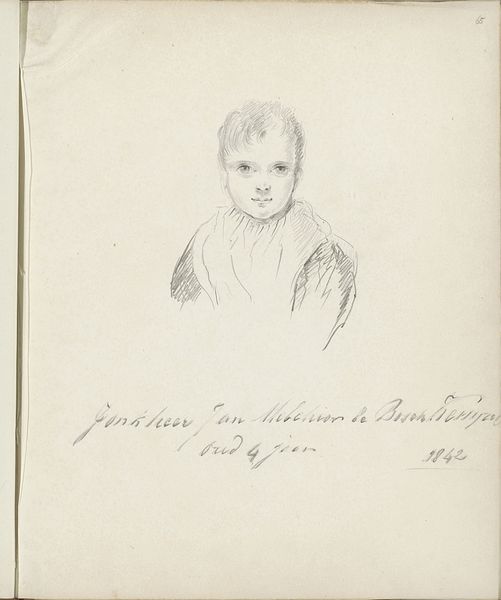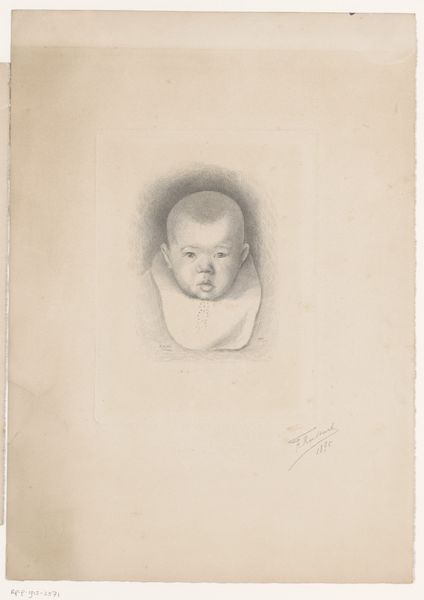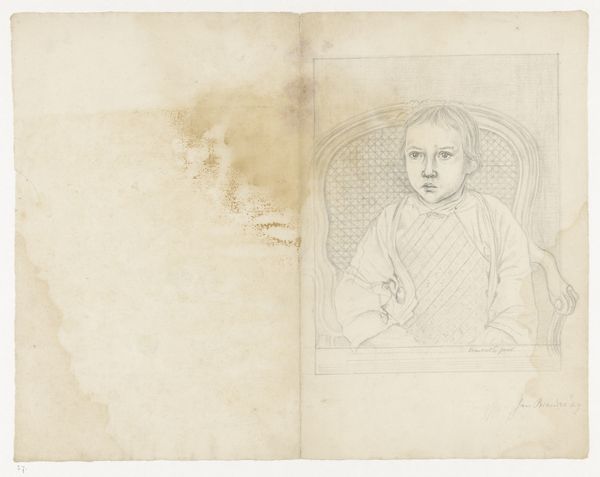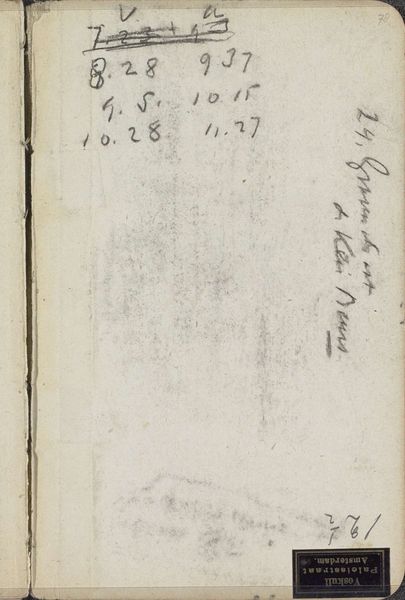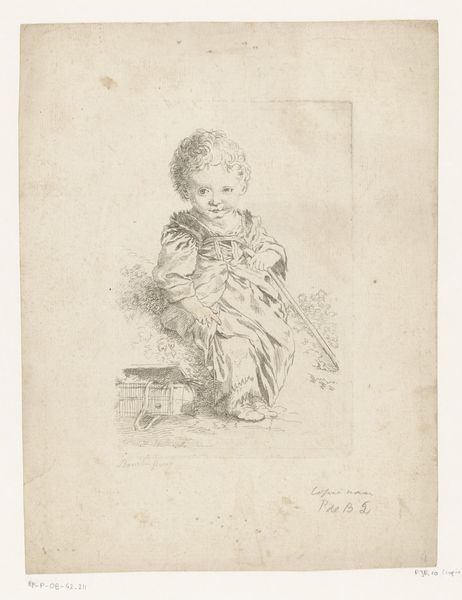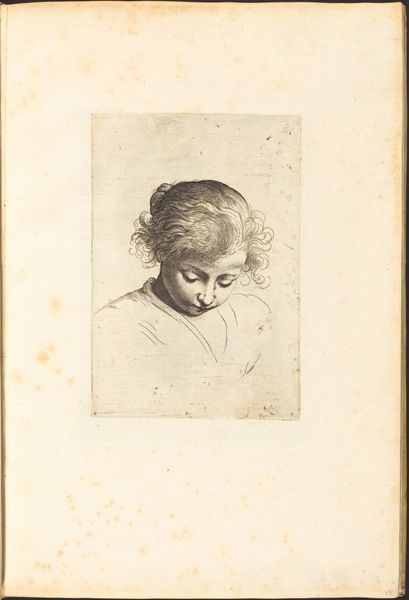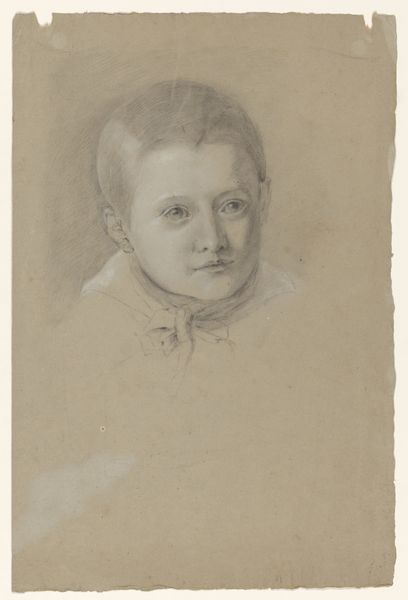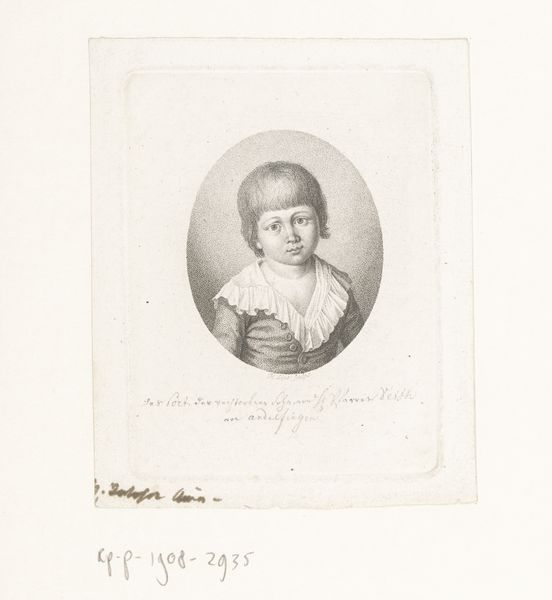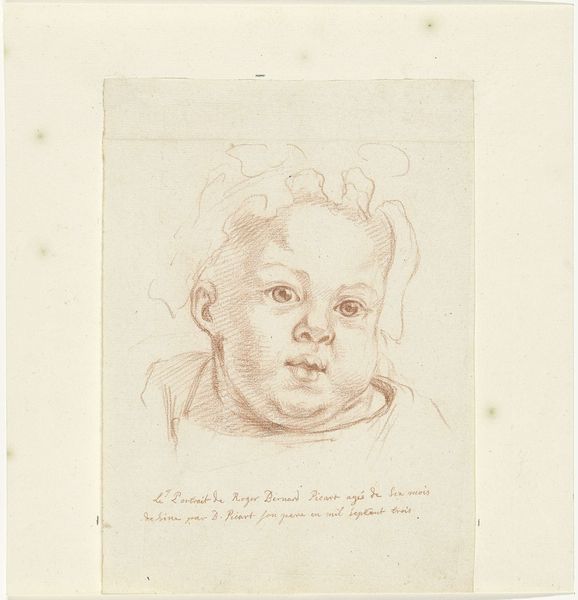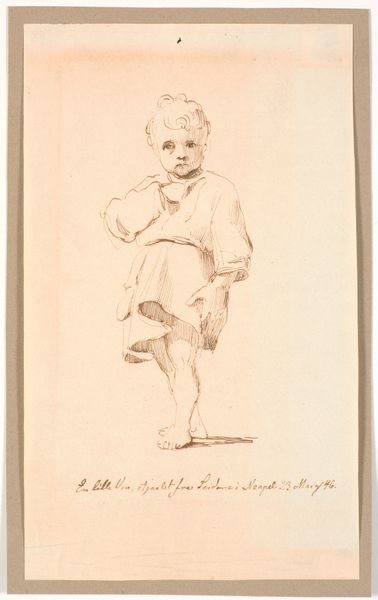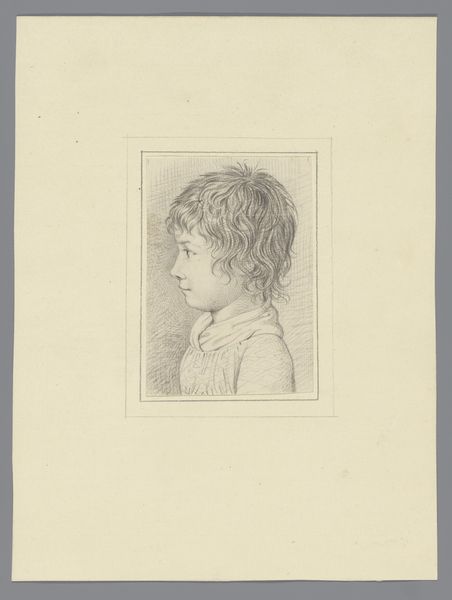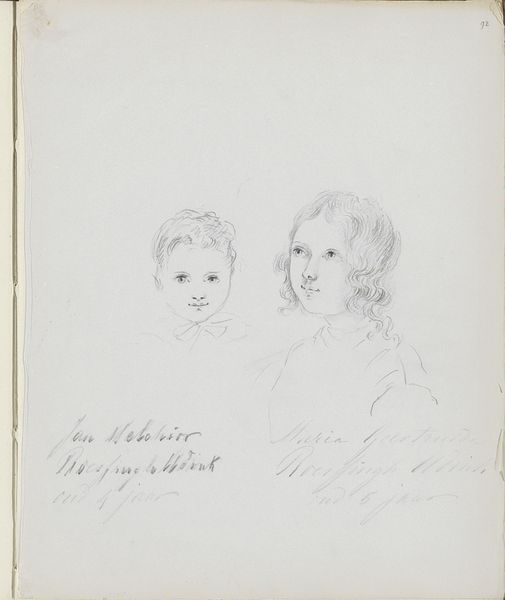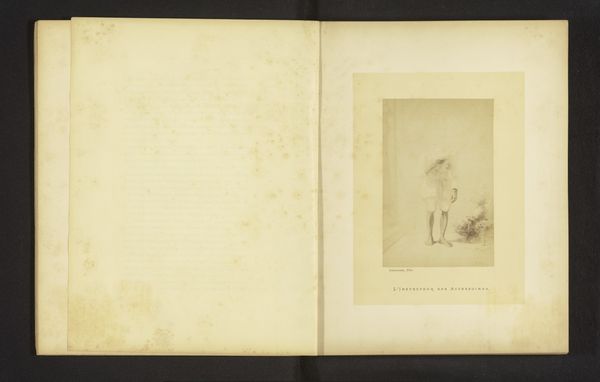
drawing, print, pencil
#
portrait
#
drawing
# print
#
book
#
pencil sketch
#
figuration
#
personal sketchbook
#
ink drawing experimentation
#
pencil
#
sketchbook drawing
#
academic-art
Dimensions: Overall: 15 1/2 x 10 5/8 x 1 9/16 in. (39.3 x 27 x 4 cm) Storage: 16 3/4 x 11 11/16 x 2 9/16 in. (42.5 x 29.7 x 6.5 cm)
Copyright: Public Domain
Editor: This is a fascinating find! It’s a print titled "Traitté de la Peinture," dating back to 1651, attributed to Leonardo da Vinci and currently held at the Metropolitan Museum of Art. I'm struck by its almost ephemeral quality—a fleeting sketch of a child, yet also practical with the numerical annotations. What symbols do you see within this work, how might it affect a contemporary audience? Curator: This image encapsulates the layers inherent within artistic creation: it is both artistic and functional, both study and artwork, it’s about seeing, really. The sketch is combined with calculations. The figure of a child is archetypal. The direct gaze transcends time. And while it appears unassuming, the work serves as a testament to the artist’s deep engagement with not just capturing the likeness but also understanding underlying principles – in this case perhaps, considering cost. What visual echoes do you detect here from Leonardo's other works, even beyond his sketches of children? Editor: Well, the softness of the lines is definitely reminiscent of his sfumato technique. And I see that, too: the gaze as almost Madonna-like. It definitely transforms this sketch from just an idle study. It is a bridge, perhaps between mundane calculations, a specific child, and a powerful symbol of innocence and observation. Thank you! Curator: Indeed! It also mirrors the visual explorations of light and shadow found within his painted portraits, imbuing this sketch with an unexpected weight. Recognizing these connections allows us to appreciate Da Vinci’s relentless inquiry, visible even within what appears as a spontaneous act of art. This is a good exercise in visual literacy: by viewing these connections the viewer becomes visually more sensitive, and literate in art’s vocabulary.
Comments
No comments
Be the first to comment and join the conversation on the ultimate creative platform.
